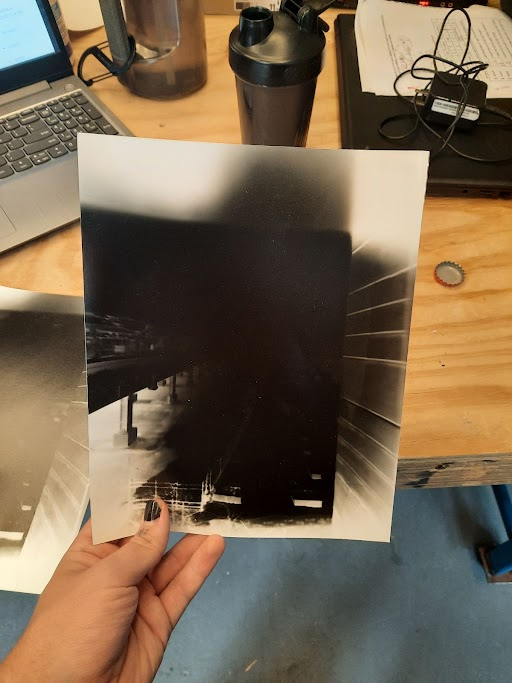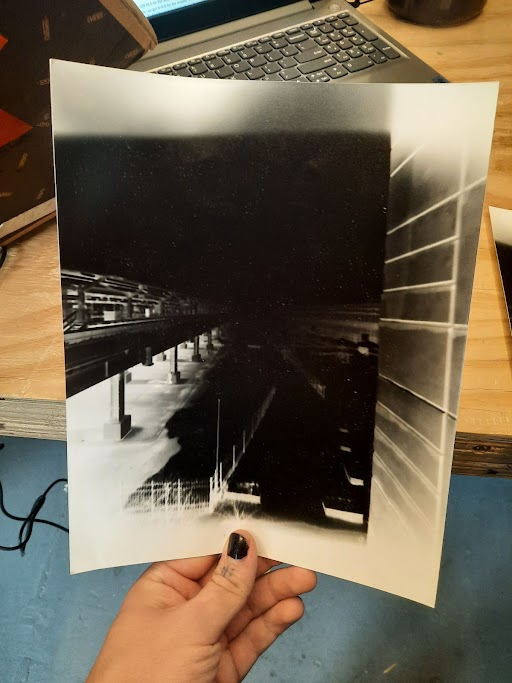This course is about the study of light sound and time. Those are all very broad topics, with lots and lots encased within. This unit is focused on the behaviors of light. So far, we have learned about light waves, frequency, sine, cosine, and tangent.
This action project focuses on the way light can be captured. To do this, we are making pinhole cameras. First, I took a shoebox and painted the inside black. Then, I searched for any light getting in and blocked it with tape. For the pinhole, I took a piece of a can and poked a hole into it about the size of a sewing needle. The pinhole camera works by stretching and expanding light through a hole the size of a pin. My camera demonstrates the concept of light absorption. As the light is going through a small hole, and transposing onto a piece of paper. However, there isn't any kind of image being reflected from the hole. The inside is black to ensure all light is only reflecting off of the white page inside. The inside is black to attempt to eliminate all light other than the pinhole from entering. This will cause distortion in the transposition. This demonstrates how light travels in straight lines. This is why the camera's picture is flipped.
The two images below I took with my camera. I set a piece of photo paper on the side opposite of my lens. i then kept my shutter closed until I was ready to expose the paper. Then, I opened it and waited around five minutes, trying not to move. After the time was up, I closed the shutter until I was back in the darkroom for development. I dipped it in a series of developing chemicals and saw my image appear.
NO, 1/30/2022, Pinhole Camera ImageNO, 1/30/2022, Pinhole Camera Image
Math stuff
The overall calculation is 7/5=26/18.5 for the distance away from the object I would've photographed. Using the Pythagorean theorem, we get h=8.6 for the smaller triangle. For the large triangle, we get h=31.9 using the same process. To find the inverse tangent, we do op/adj and get 55 degrees. The last angle equals 35 degrees.





No comments:
Post a Comment